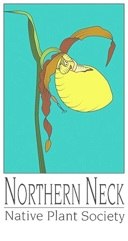Plant of the Month May 2019: Fringetree
Submitted by Betsy Washington, Northern Neck Chapter of the Virginia Native Plant Society
Chionanthus virginicus: Fringetree, Old Man’s Beard
Fringetree (Chionanthus virginicus) is one of our most beautiful and under-used, small flowering trees. It is breathtaking in full bloom in May when clouds of dainty, silky-white flowers are held in drooping clusters at the ends of branches. The flowers have a delicate but evocative fragrance that carries for some distance in the garden. Fringetrees are named for their pendulous flower clusters that look like a fringe of snow drooping up to 6 – 8” from the branch tips, or an ‘Old Man’s Beard,’ another common name.
The flowers are dioecious, meaning male and female flowers occur on separate trees. Their diverse pollinators include honey and native bees, bumblebees, small beetles and a variety of butterflies. If pollinated by a nearby male, the female flowers ripen into clusters of dark blue-black plum-like fruit that are a favorite food of small mammals and many birds, including bobwhite, wild turkey, cardinals, mockingbirds and bluejays. Fringetrees also host eight species of caterpillars.
This small deciduous tree grows relatively slowly to a mature height of 10 – 20’ in gardens, but can reach up to 35’ in the wild. Fringetrees have a rounded and somewhat irregular habit, and can be pruned to one to three trunks to make an elegant specimen tree. The simple oblong leaves, up to 8” in length, are arranged opposite from each other along thick stems, giving the trees a distinctive almost tropical look, and often turn a vivid yellow in fall.
Fringetrees are adaptable and easy to grow in acidic soils in sun or part shade, are tolerant of pollution and even tolerate the shade of Black Walnut trees. They are found throughout the Northern Neck along streams, the edges of swamps, low woodlands and drier upland woods. Enliven your spring and fall gardens with a beautiful Fringetree, or group them in a small grove to insure you can enjoy both flowers and fruit.

